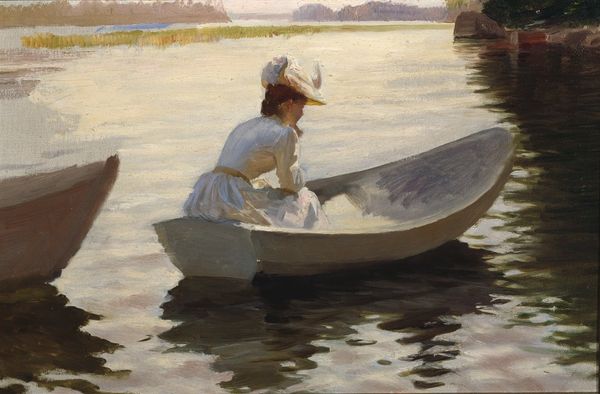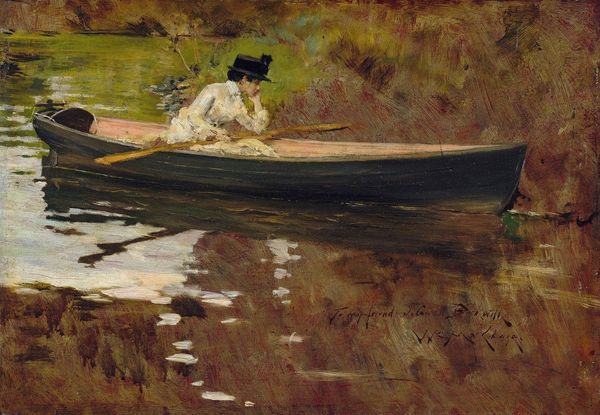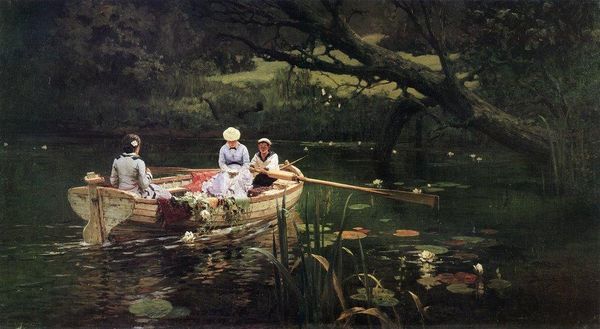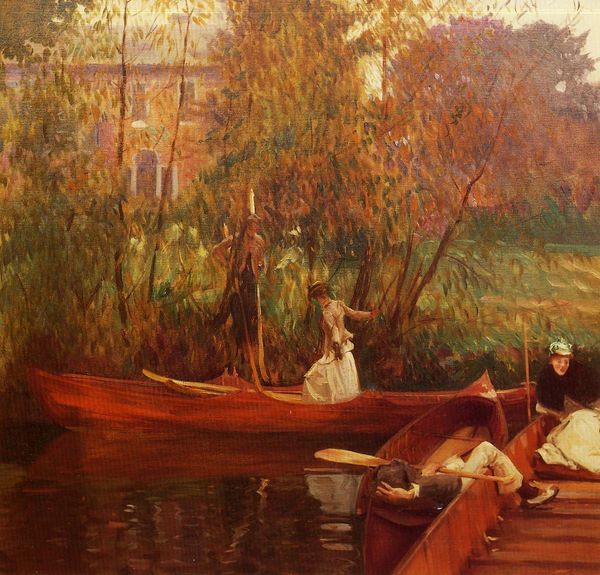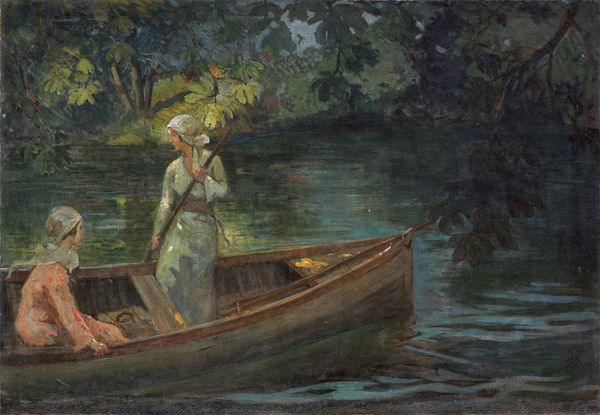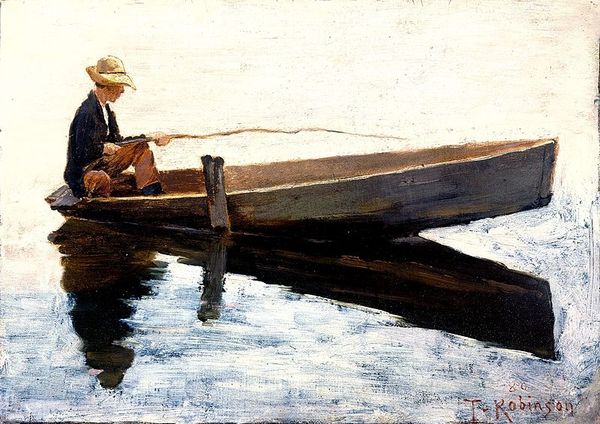
painting, oil-paint
#
portrait
#
impressionist
#
boat
#
painting
#
impressionism
#
oil-paint
#
landscape
#
river
#
glasgow-school
#
oil painting
#
water
Copyright: Public domain
Curator: Here we have Sir John Lavery’s "Boating on the Thames," painted around 1890. Editor: The surface tension in the water is quite something. You can almost feel the cool dampness radiating from it, it makes the air so thick, and then there’s this golden, warm figure reclining... Curator: Reclining indeed! The composition depicts an elegantly dressed woman lounging in a punt, steered by a man standing behind her. What is particularly evocative to me is the subtle interplay of societal roles being enacted upon that Thames riverbank. It brings up the pre-war era when social class defined how every member of the community took part in cultural events, how one social role would never do what the other was doing. Editor: I’m stuck on how that water is made to feel both weighty and flowing—the almost haphazard strokes suggest the movement without rendering every ripple with detail. It's not a romanticised or heroic scene; the paint suggests how labor in the service sector, that of steering a boat, can be made so seamlessly graceful when actually we all understand work as requiring huge resources of personal energy. Curator: That contrast between the leisurely subject and the labour is key to how this is understood. Look closer, though, and you will see he wasn't rendering a realistic account, the water acts as a mirror to the subjects which tells us it serves a reflective symbolic purpose too, much like how water used to cleanse and purify souls for many in earlier culture. Editor: That makes me wonder about the craft. What kind of boat is that? The long, flat bottom makes sense for shallow waters but surely impacts on handling—who builds it, and from what wood? How much is a days' wages to pay someone to make it and propel you down the river? Curator: And beyond all of this, "Boating on the Thames" offers a fleeting glimpse into a specific historical context, how it has allowed cultural transmission in a specific community through objects we still use today. Editor: True, all while grounding the upper classes to everyday processes, that reminds me to investigate Lavery’s methods when I return home to see if the artist prepared his own materials or if this labor was undertaken elsewhere.
Comments
No comments
Be the first to comment and join the conversation on the ultimate creative platform.

